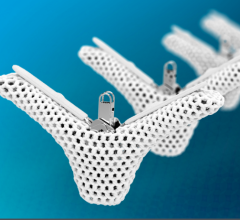
December 5, 2014 – An estimated quarter of a million of older adults are diagnosed with aortic valve stenosis each year. And the treatment options, which include open-heart surgery to replace the aortic valve and less invasive transcatheter aortic valve replacement (TAVR), come with serious risks as well, including death.
New research from the Minneapolis Heart Institute Foundation has uncovered a way to help interventional cardiologists better predict which patients are at higher risk for death following TAVR, allowing both patient and surgeon to discuss a potentially different treatment plan.
Cardiologists and heart surgeons already look closely at tricuspid regurgitation (TR) in patients who are candidates for surgical aortic valve replacement, because the condition can tell them how likely the patient is to benefit from the procedure. This new research shows that TR may help cardiologists identify patients who are good (or poor) candidates for the minimally invasive TAVR procedure too.
To assess the impact of TR on TAVR outcomes, MHIF researchers analyzed the medical records of 129 TAVR patients. They looked at TR both before the procedure (baseline) and 30 days after, and classified the condition as none, mild, moderate or severe. The cases were divided into two groups according to baseline TR: none (n=89) and significant (anything worse than mild) (n=32). Survival following TAVR was significantly worse both in patients with significant TR and in patients who developed late TR (TR that had worsened to either moderate or severe at 30 days follow-up). The results were independent of baseline left ventricular ejection fraction (LVEF).
“While we don’t know yet whether this is cause and effect or TR is simply a marker for poor heart function,” said co-researcher Robert Schwartz, M.D., FACC, FAHA, “TR status and severity should be included in TAVR risk assessments to guide treatment decisions and aid in prognosis.”
For more information: www.mplsheart.org


 November 17, 2025
November 17, 2025 









